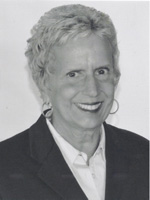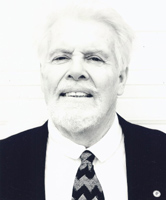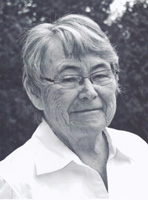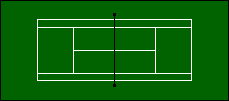 |
|||
 |
 |
 |
|
Mary Kay Baribeau Port Huron Northern |
Jim Hadley Dearborn Hts. Robichaud |
Margaret Ruemenapp Petoskey |
|
(click on Inductee's name to read 'description')
 |
|||
 |
 |
 |
|
Mary Kay Baribeau Port Huron Northern |
Jim Hadley Dearborn Hts. Robichaud |
Margaret Ruemenapp Petoskey |
|
(click on Inductee's name to read 'description')

 Mary Kay Baribeau, Port Huron Northern High School
Mary Kay Baribeau, Port Huron Northern High School Mary Kay Baribeau started her first teaching/coaching job in 1970 at a brand new junior high school in a community of very mixed demographics and not much affluence” (North Junior High in Belleville), says Linda Saslow. “As a student entering the 7th grade (the first three years in that school), I was able to witness firsthand the transformation of many things, propelled and directed single-handedly by her. In addition to transforming coordinated kids into athletes, she turned kids with no athletic ability into happy participants and unstructured kids into responsible members of the school and society. She did all this with a razor sharp sense of humor.”
Linda went on to describe how Mary Kay was, in effect, the school’s athletic director without the title. “She jumped in full force, deciding the school mascot, the school song, the school colors, and even the uniforms,” she says. “Every program at that school was created from scratch by her. She coached girls gymnastics, cheerleading, and softball every year. In the off-season, she started a bowling league for girls and a basketball team in order to run teacher-student games for the whole school. Claiming that she had better moves than Michael Jackson, she held dance-offs to let kids try to outsing/outdance her.”
Thus it is not a surprise that this passionate force should achieve so much success as a high school tennis coach. “The success of her teams is well documented, having won three state championships from 1999-2002,” says Barbara Lynch, manager of the Port Huron Tennis House. “Two of those state titles came down to the last match at the state tournament; Mary Kay coached both of them.”
Mrs. B was a head coach at Northern for nine years and assistant varsity/JV coach under Hall of Famer Al Wright for eight. She helped Al with each varsity match before sending her JVs out to play. In 1996, another JV coach was added so that she could assist the varsity team exclusively. Not coincidentally, the Huskies won the state title in 1996 and 1997. They were runners-up in 1991.
Then as head coach, Mary Kay led her girls to three more state titles in 1999, 2000, and 2002 (Her team was state runner-up in 1998). There were also two sixth place finishes, in 2001 and again in 2003. In total as either a varsity coach or varsity assistant under Al, she compiled a record of 113-15-7. She was named our association’s Assistant Coach of the Year in 1993 and Class A Coach of the Year in 2000.
“Those of us who have observed her have many stories to tell about her coaching her players through matches,” says longtime friend Susan Kries. “Some were cases where there was no apparent hope of winning, and she talked them into winning nonetheless.”
“I still remember the 2002 state championship clearly,” says Dan DeGrow, whose two daughters played on state championship teams for Mary Kay. “Northern had no business winning that title. At best, they were the 4th or 5th best team in the state, where they had been ranked all year. Yet on that weekend in Midland, they won it all……She is the best high school tennis coach I have ever seen. No one got more out of the talent that she had.”
“B” didn’t finish with her kids just because they graduated. “She attended my wedding and visited me after the birth of my children,” says Allison DeGrow Ruiz who played for B four years and was a part of three state championships.
“She wrote letters of recommendation for every girl who wanted to play college tennis and helped the girls find schools that fit them as individuals,” say parents Kris and Julie Moulds. Indeed, nineteen of her kids secured financial scholarships for tennis and all were successful. “She visited many colleges to watch her students compete,” adds principal JoAnn Monaghan.
“I was part of the first team she coached at Port Huron Northern that went on to win back-to-back state championship titles,” says Christee Chargot Onyschuk. Christee went on to play for MSU. “She was a large part of making that dream a reality,” she says.
But Mary Kay’s impact goes far beyond wins and stellar players. Former players and their parents use words and phrases such as guiding force, inspiration, positive role model, giving, mentor, happy of heart, sincere, genuine, strong, fair, tireless, compassionate, disciplined, calm but firm, and yes, transformational to describe her. “She displayed a remarkable balance of playfulness with a no-nonsense attitude,” say parents Walid and Rasha Demaskieh.
“In addition to knowing the fundamentals of the sport, Mary Kay knew the fundamentals of dealing with teenage girls, a feat many coaches can understand as being extremely difficult,” say parents Bill and Pam Watt. “She saw many of her players through difficult times, traumatic family problems, and the general heartache that goes along with growing up as a teenager.” Indeed, Mary Kay’s bond with her kids was such that she would host dinners for her teams (and sometimes even rival teams) and take her kids to her condo at Boyne Mountain after the season.
‘It was a rare luxury to see how your parent impacts other people with her ability to communicate and strong commitment to a shared goal,” says daughter Keely Baribeau who played 1D and 1S for her mom. “To say that this is a unique perspective to witness someone as a motivator, mentor, and role model is an understatement.”
“Virtually the entire town of Port Huron regards Mary Kay as a treasure, if not a legend,” says Susan Kreis. Indeed her impact has reached the status of immortality, the definition being that which goes far beyond the present. Also, a quality of one who belongs in the Hall of Fame.
| Back to Top |
 Jim Hadley, Dearborn Hts. Robichaud High School
Jim Hadley, Dearborn Hts. Robichaud High School At first-glance stereotype of the Hall of Fame tennis coach is one whose kids have won hundreds of dual meets, lots of Saturday tournaments, multiple conference championships, scads of regional titles, and even several state championships. But in truth, much focus is also paid by the Selection Committee to the Mr. Tennis of a community, the guy whose commitment and love of the game over so many years is the sole reason why a high school program exists. “If it weren’t for fill-in-the-blank, X High School wouldn’t have a tennis team,” is a common refrain.
Introducing Jim Hadley, who has labored in the vineyards of Dearborn Hgts. Robichaud for 43 years. Both boys and girls. That’s 86 seasons. These four decades are not to be sneezed at, not only for the longevity that they represent but for the continuity, another prime ingredient in successful coaching. “Jim has demonstrated incredible dedication not only to the sport of tennis but to the hundreds of young people that he has coached,” says Hall of Famer Chuck Wright of Grosse Pointe University Liggett. But even the term “introducing” is misleading. Jim was recognized by his peers in 1999 with a State Coach of the Year recognition.
That’s because it hasn’t been easy. The population of Robichaud High School draws from slices of Dearborn Heights and Inkster that aren’t bastions of affluence. From the beginning to the end, Jim has had to accumulate donated equipment. A common beginning to each practice and meet is to open up his van so that players could select their rackets from a cache of about 20. They were required to return them at the end of the day, “Otherwise I might not see them the next day,” he says.
Jim estimates that maybe one ninth grade kid per season would come to him with tennis experience. He was starting from scratch with raw troops. As a P.E. teacher, he tried to recruit the best athletes from his classes. Although these kids lived near the Dearborn Racket Club, they couldn’t afford lessons.
Therefore they got their instruction from a good athlete who himself never played the game in high school. Jim was a football and track star at Dearborn Fordson who went on to play four years of varsity football at Eastern Michigan University. In 1965, his senior year, he was captain of the team. In the midst of this, he took a class called The Theory of Tennis. “I learned the rules,” he says, “and I thought, ‘Man, this is kind of fun.’”
Jim began coaching tennis in 1968 on five courts, the same ones that were last resurfaced 15 years ago. His kids enjoyed some success in that they competed in the Suburban Athletic League against schools that were in the same metaphorical boat: Inkster, River Rouge, and Ecorse. But this didn’t extend to the regionals where the competition got so much stiffer. The last time he took kids to the state finals occurred before the flight format was instituted in 1976
But he demonstrated that he can coach, one measurement being a comparison of his team from the beginning of a season to the end. “Not to be lost was Jim’s ability to take a youngster or group of youngsters who knew nothing about tennis at the beginning of a season to an astonishingly high level by the end of a season,” says Taylor Truman’s Louis Preston. “I always preferred playing Jim at the onset of a season over playing his teams later in the year.” This is echoed by Chuck who says, “Every year, one could see the improvement of each individual as he progressed through his high school years”
He labored “in an environment where tennis is not a normal part of life,” says Louis. “If equipment was lacking, he found a solution,” adds Hall of Famer Mike Hairabedian. “His tennis program became a refuge for countless students. He became a lifeline to the youth, the neighborhood, and the school.”
More to the point, he made it fun. “Jim always went out of his way to get to know my players and to joke around with them,” says John Forster, present coach at Jim’s alma mater. “During those years, my teams always looked forward to and enjoyed our matches against Jim and his Bulldogs. On several occasions, I noticed that Jim and his kids often managed to sneak into our team pictures. He always had his players and mine laughing as he explained how his Bulldogs were going to whip the Tractors…….. it was about the fun and experience of competing that mattered most.”
“Jim is an exceptional coach,” continues John. “He has allowed hundreds of young people an opportunity to participate in the sport of tennis. Without his dedication and passion, hundreds of young people would never have picked up a racquet, never would have been part of a team, and never would have developed lifelong memories.”
“His gentle ways, basic kindness to others, and his terrific sense of humor endear him to all,” adds Chuck. “His invaluable lessons and his wonderful example have certainly changed so many lives for the better. He has a beautiful perspective towards competition and life in general.”
“Jim cares about kids and he cares about tennis but he desires neither the spotlight nor praise for doing something that has given him so much joy and so many friendships,” concludes John.
After 43 years and 86 seasons, it’s time to change the spotlight part.
| Back to Top |
 Margaret Ruemenapp, Petoskey High School
Margaret Ruemenapp, Petoskey High School At her Hall of Fame induction in 2003, the legendary Karen Langs assured Ed Waits that “the Petoskey program will be in good hands” now that she was retiring. To be sure, Ed is not from Northern Michigan. Anybody from that region would have recognized this as an unnecessary and gross understatement.
After all, three of Margaret Ruemanpp’s daughters had played for Karen. All three were all-state, one receiving that honor all four years. Beth went on to play four years at Kalamazoo College, Jennifer played 1S as a freshman at Ohio University, and Tina played for Grand Valley. All three held USTA rankings. All three played Junior Wightman Cup and Beth played Junior Federation Cup. They were all taught by their mom in her North Country Junior Development program.
But more to the point, Margaret assumed the Petoskey job with a loaded coaching and teaching resume. She had taught tennis for Petoskey Parks and Recreation for 13 years. She gave 10 years of service to the Northern Michigan Tennis Association as Junior Development Officer and then President. She coached and administered the Junior Wightman Cup and Junior Davis Cup for the district. She oversaw the evolution of the organization’s yearbook from a newsletter to a 62-page annual publication.
In 1990, Margaret started the Harbor Springs High School Girls Tennis Program as a club and shortly thereafter formed a team. She coached there for 11 seasons and put several of those years into fundraising efforts to build six courts. The squad won several regionals and attained a state ranking of #6. She coached four all state players, two at 1S and two at 1D. She was named MHSTeCA Class C-D Coach of the Year in 1991.
Also during that time span, Margaret coached the Harbor Springs boys team for three seasons and a bit later, the Petoskey boys JV team for two campaigns. And then in her 8 seasons as Karen’s successor (2003-2011), the team was frequently in the top ten and a number of players were all-state. Once again, she contributed her time, effort, and expertise into adding six new courts at the high school (total of 12).
Margaret had the pleasure of coaching her granddaughter and namesake Margaret Jensen for four years and her granddaughter Gabby for one. Two of the players on her last team, Erin Clutter and Kali Phillips, had been with her since they were three years old. In 2011, she was again awarded a MHSTeCA Coach of the Year designation, this time in Division 3 girls as Petoskey’s coach.
This is a lifelong tennis player (40 years) who was Head Tennis Professional at the Grand Traverse Hilton (now the Grand Traverse Resort) from 1980-81. She coached the Traverse City Central girls team to its first league title in the Mona Shores Conference during that time. She developed and administered the Area Training Center for the district ranked players in Northern Michigan. She was the founder of the North Country Junior Development Program and worked with it for ten years before taking over the Petoskey girls team. She was Director of Tennis and Head Professional at Little Traverse Racquet Club from 1981 to 2002.
“It was my good fortune to work with Margaret for a year at the Little Traverse Racquet Club,” says Chuck Wright of Grosse Pte. University Liggett, himself a Hall of Famer (2002). “She taught me more about being a good instructor, especially with group clinics, in that year than I have ever learned in my tennis career.”
It makes sense that the Ruemenapp family would be named NMTA Family of the Year in 2008. In addition to her daughters’ accomplishments (currently USTA 4.5-5.0 players), Tina was Margaret’s assistant coach for five years. Son Andy played four years at Petoskey, was a member of a state championship team, a four-year Hope College player, and part of the team that beat Kalamazoo College for the first time in 41 years. Stepsons Rich and John played doubles for Petoskey High School. Tina’s son Adam plays 4S and 1D for the school. And then there are granddaughters Margaret and Gabby.
To be sure, there are accolades aplenty. Margaret was named Lake Michigan All Sports Conference Champions Coach in 2002-2003, was given the Glen Casey Award for Petoskey Parks and Recreation service, the Beyond the Scoreboard award as Youth Sports Leader in 2005, and the Athena Award in 2003. Taken as a whole, these are astounding accomplishments.
It was Karen who introduced Margaret when she received the Lifetime Achievement Award on behalf of the Beyond the Scoreboard organization. “Her impact was felt immediately when she moved “Up North” a little over thirty years ago,” she said at the time. “Her accomplishments started with her very own Scotch determination on the tennis courts and from there, success spilled into the community and to all of Nothern Michigan..... She developed program after program, feeding talent into the high school tennis programs, especially into all of the communities of the Little Traverse Bay region. She set up countless tournaments and traveled to countless towns across the state and beyond, taking with her a troop of kids, parents, and fans.”
Karen concluded that “It is no surprise that her leadership qualities, her desire to teach and promote positive character, her love of sport and community, have deservedly brought her this award.”
Karen echoes the sentiments of Ed who wrote the
MHSTeCA Coach of the Year article about Margaret last year. After compiling the information and finishing the selection, he said to himself: “This isn’t just a Coach of the Year. This is a Hall of Famer.”
The Selection Committee agrees.
| Back to Top |